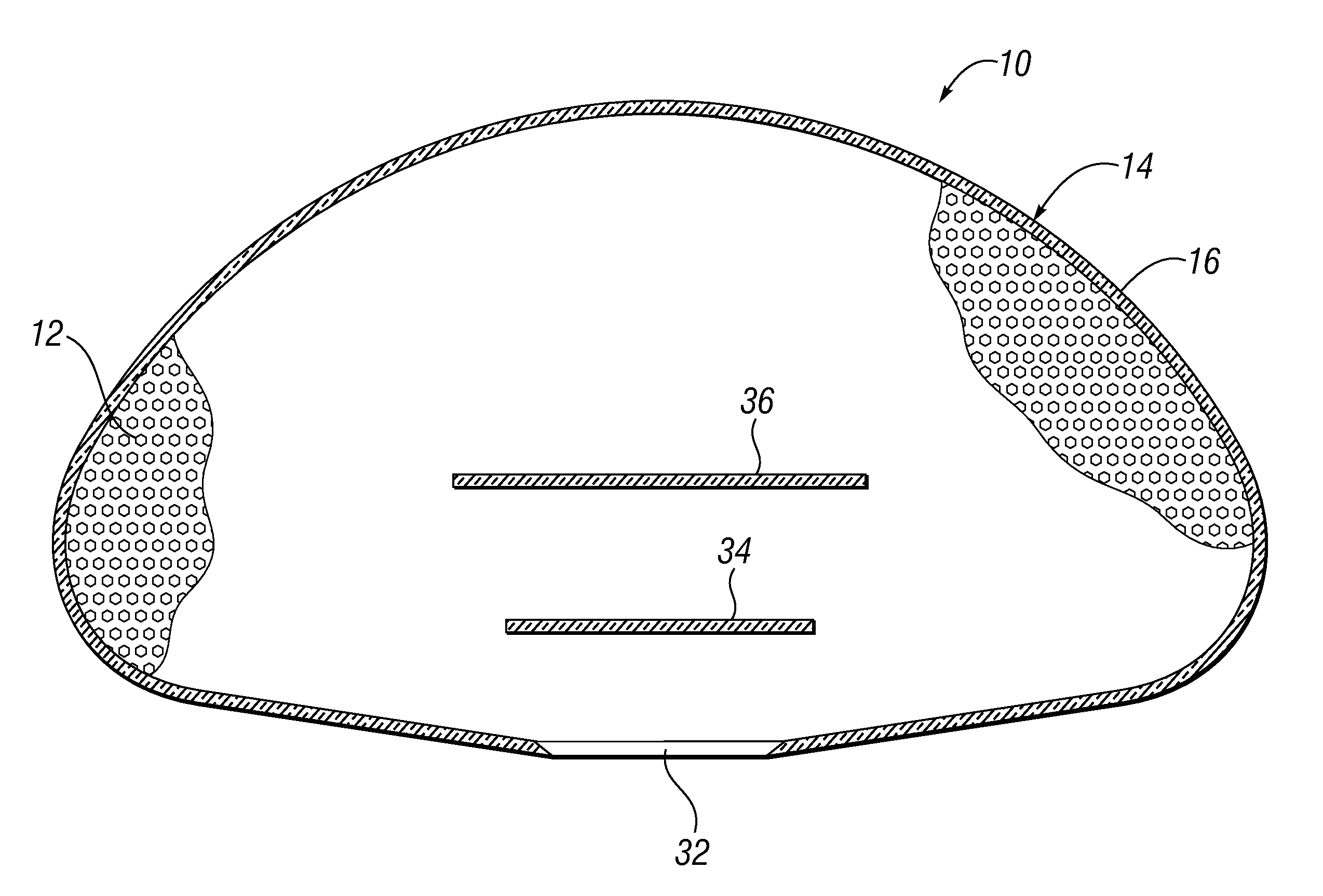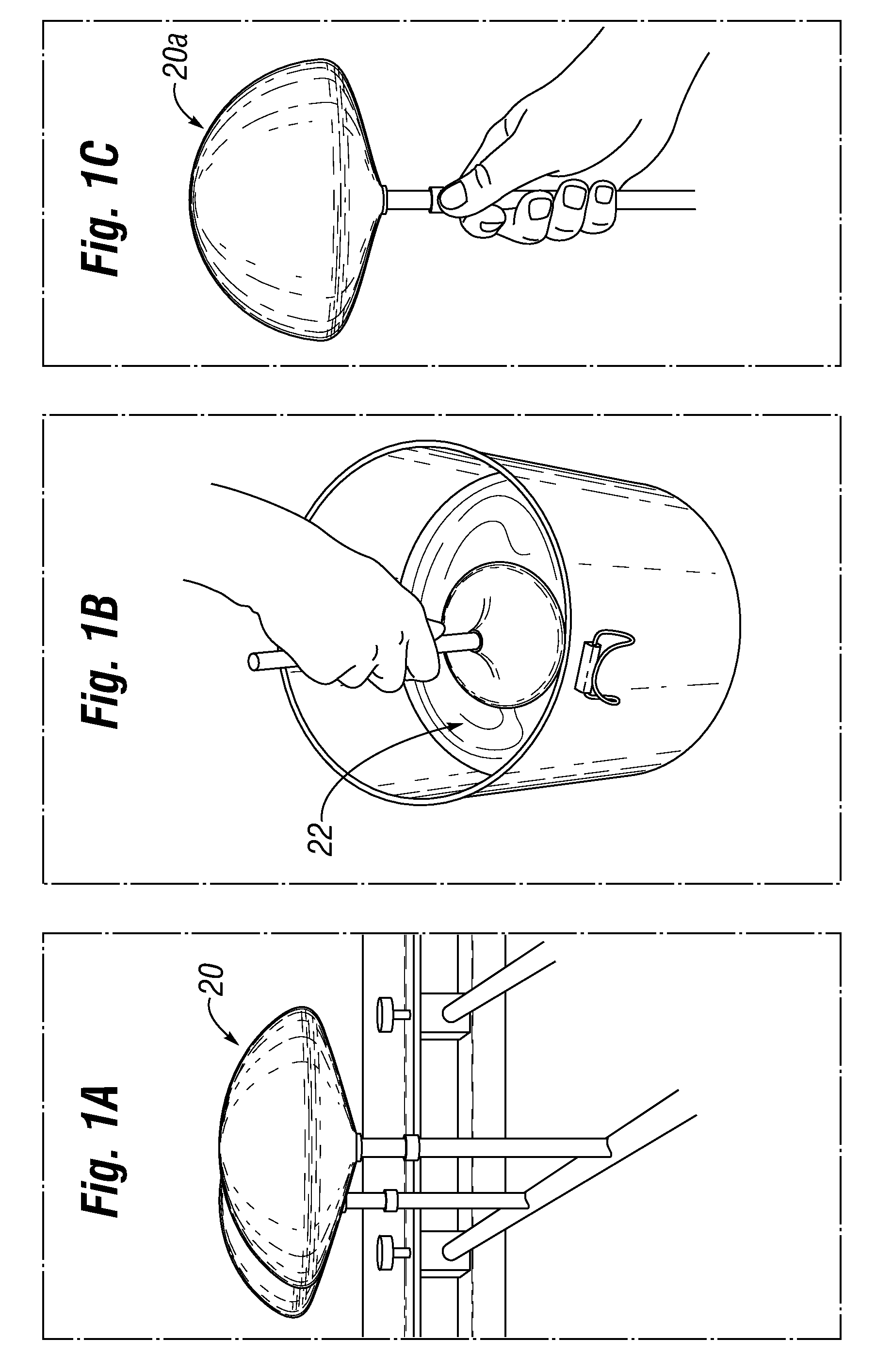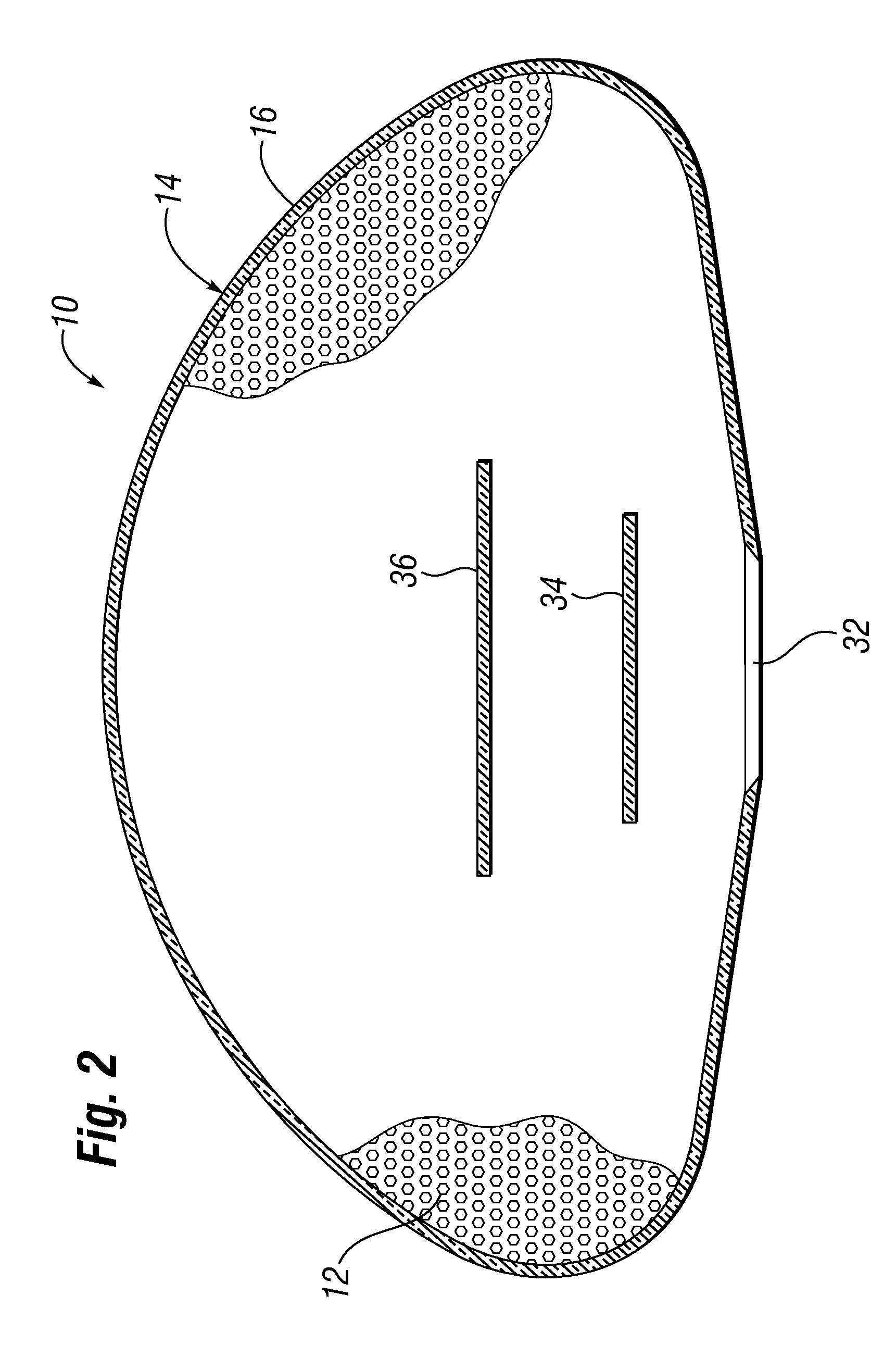All-barrier elastomeric gel-filled breast prosthesis
a gel-filled breast and elastomeric technology, applied in the field of soft prosthetic implants, can solve the problems of limiting the concentration of polymer in the polymer to a maximum mole percent, hindering other molecules' free movement, and affecting the bleed rate, and achieve the effect of lowering the bleed ra
- Summary
- Abstract
- Description
- Claims
- Application Information
AI Technical Summary
Benefits of technology
Problems solved by technology
Method used
Image
Examples
Embodiment Construction
[0032]The present invention provides a gel-filled implant, or prosthesis, constructed of an effective bleed resistant, rupture resistant shell surrounding and in direct contact with a silicone gel core.
[0033]In one aspect of the invention, the shell is defined by, for example, substantially entirely defined by, a single, substantially homogenous silicone elastomer layer. That is, the shells of many of the implants of the present invention are made of a single material of homogeneous or uniform composition, as opposed to a laminated or layered configuration common in conventional prosthetic implants.
[0034]The implants of the present invention may be suitable for use in reconstruction or augmenting the human breast. Other potential applications are implants for the buttocks, testes, calf, among other body areas, as well as tissue expanders therefor.
[0035]FIGS. 1A-1C illustrate, in somewhat simplified form, a suitable process for forming flexible implant shells for implantable prosthes...
PUM
| Property | Measurement | Unit |
|---|---|---|
| mole percent | aaaaa | aaaaa |
| mole percent | aaaaa | aaaaa |
| thickness | aaaaa | aaaaa |
Abstract
Description
Claims
Application Information
 Login to View More
Login to View More - R&D
- Intellectual Property
- Life Sciences
- Materials
- Tech Scout
- Unparalleled Data Quality
- Higher Quality Content
- 60% Fewer Hallucinations
Browse by: Latest US Patents, China's latest patents, Technical Efficacy Thesaurus, Application Domain, Technology Topic, Popular Technical Reports.
© 2025 PatSnap. All rights reserved.Legal|Privacy policy|Modern Slavery Act Transparency Statement|Sitemap|About US| Contact US: help@patsnap.com



